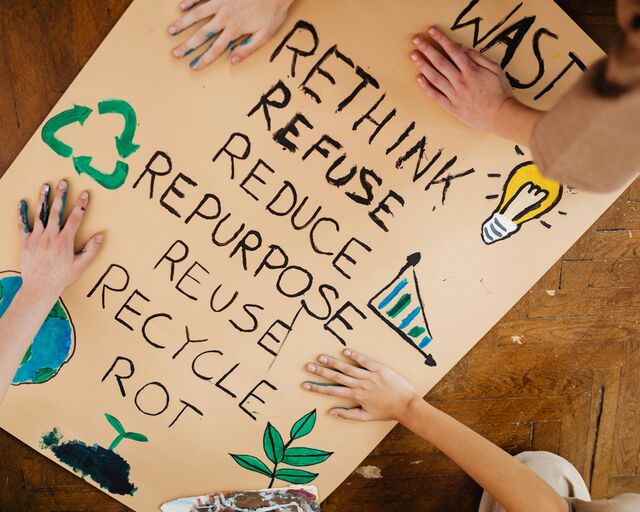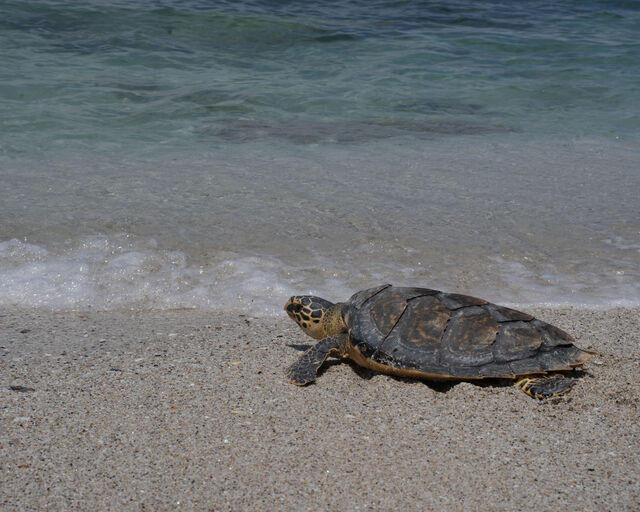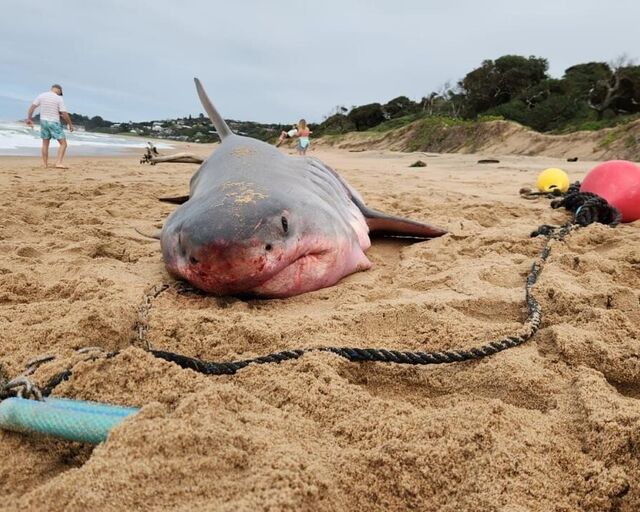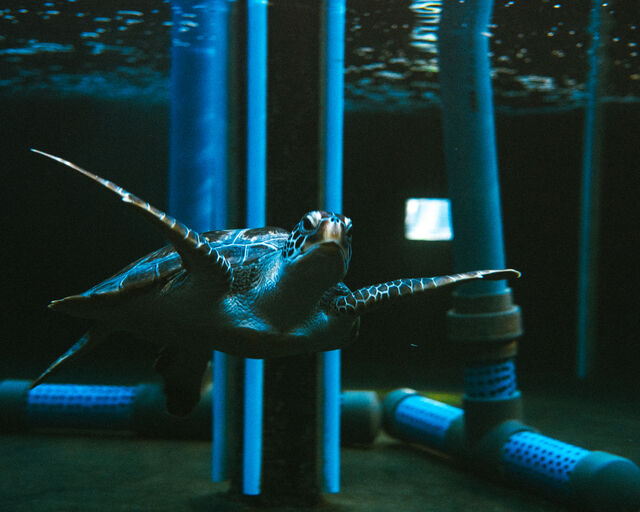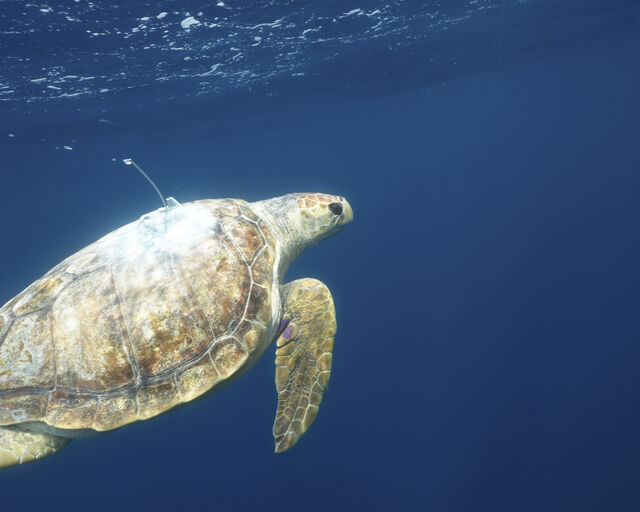Happy Turtle Day: How our Turtle Conservation Centre saved 606 turtle hatchlings in 2024
Every year, hundreds of turtle hatchlings are brought to our Turtle Conservation Centre after stranding on the beaches of the Western Cape. But in 2024, after intense storms hit the coastline, our turtle team were challenged like never before when over 600 turtle hatchlings washed ashore.
In light of World Turtle Day tomorrow, we’re shining a light on how our dedicated community responded to this record-breaking stranding season and what it means for the future survival of turtle species.
Take a swim down memory lane with our Turtle Conservation Centre…
What does a normal stranding season look like?
Every year between January and March, thousands of loggerhead and leatherback turtle hatchlings enter the warm, fast-flowing Agulhas Current after hatching on the beaches of northern KwaZulu-Natal. The powerful current sweeps them south towards the Western Cape. Near Cape Point, the Agulhas Current turns – this abrupt change in direction often spits the weaker, compromised hatchlings into the cold and rough coastal waters, where they are stranded on the beaches.
Thankfully, our Turtle Rescue Network is active across the Western Cape coastline. This incredible network of people consists of conservation organisations, local municipalities, community members, and more, all of whom are committed to rescuing stranded turtles. From Lambert’s Bay to Gqeberha, the network plays a crucial role in getting stranded turtles to the safety of the Turtle Conservation Centre.
During a typical stranding season, the Turtle Rescue Network may assist with the rescue of about 250 turtle hatchlings, each of which is rehabilitated over several months by the Turtle Conservation Centre before being released back into the ocean. In 2024, this norm was disrupted by “turtle-geddon”.
Turtle-geddon incoming…
In April 2024, unseasonal weather hit the Western Cape. Driving rains, extreme storms, and severe ocean conditions coincided with the hatchlings’ typical journey along the coastline, pushing many of them off course.
On Sunday, 7 April, the Turtle Conservation Centre was caring for 22 hatchlings. These early arrivals had been rescued around March, prompting a few of the turtle team members to comment on the slowness of the stranding season… Little did they know, by Monday, 8 April, they would have 144 hatchlings in their care. By the following Monday, 15 April, the numbers had skyrocketed to 417.
The rain continued, and so did the hatchlings, their intrepid rescuers braving the beaches to find them. This was when the turtle team coined the phrase “turtle-geddon” – the hatchlings just kept coming, carried in by the hundred in boxes, crates, and buckets.
The last hatchling to be rescued and brought to the Turtle Conservation Centre (in mid-May) was number 606.
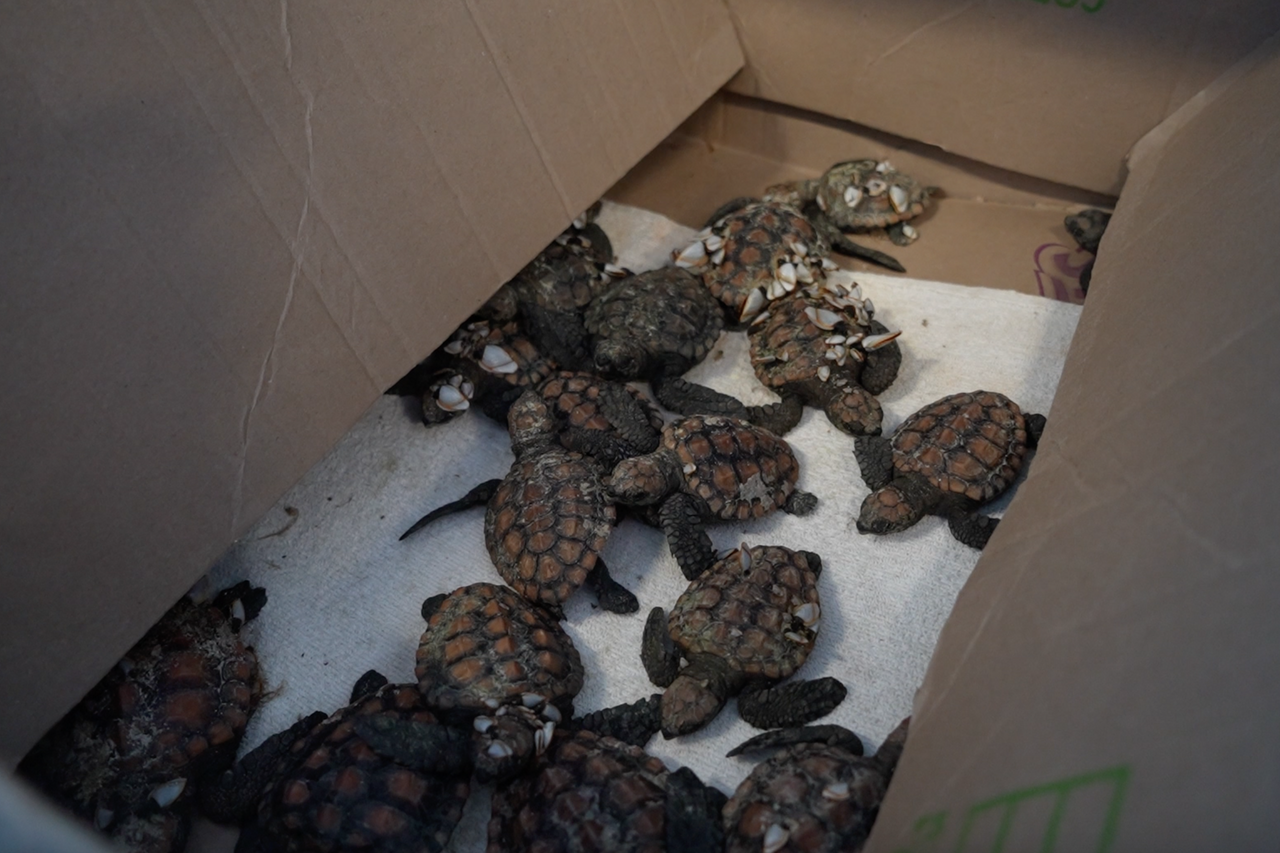
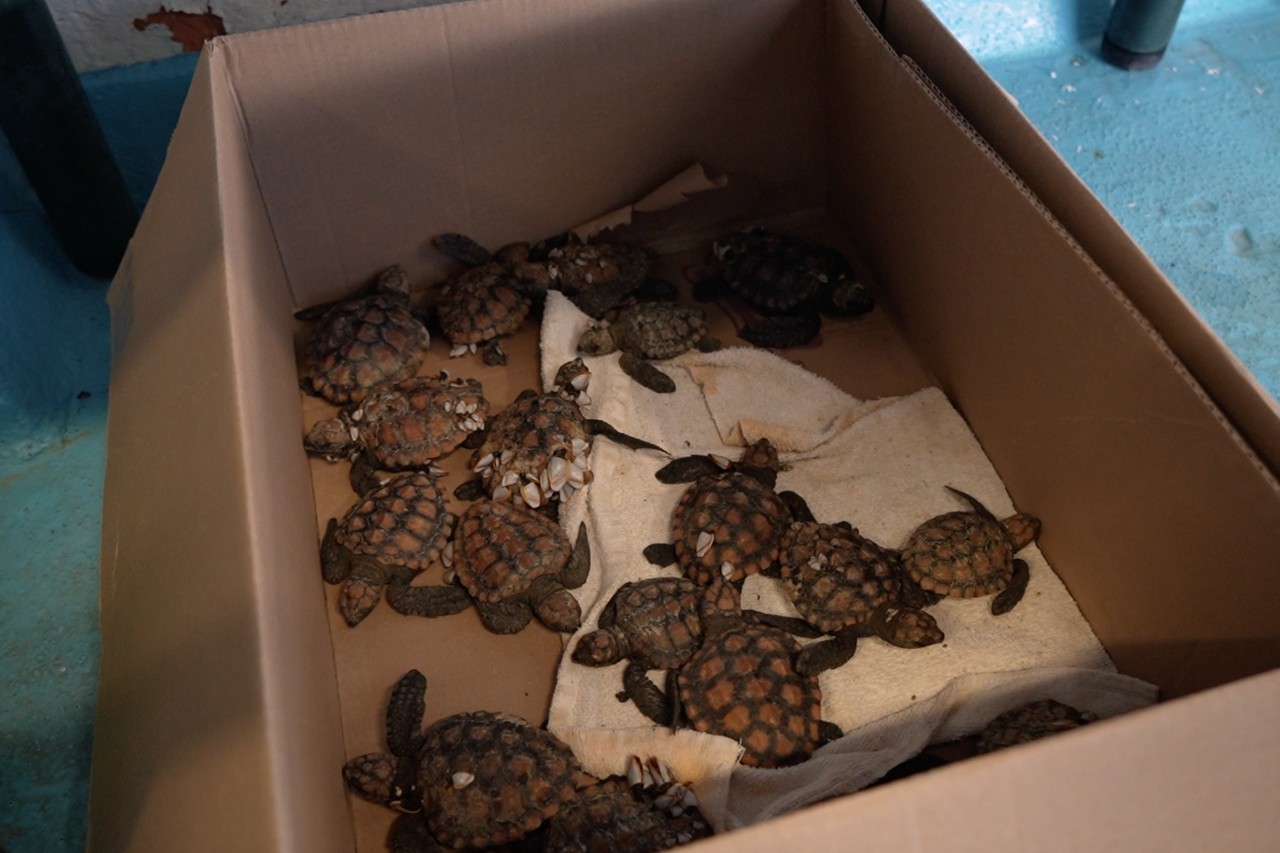
What happened when the turtles arrived?
With the shell shock of the first big batch of turtles wearing off, the Turtle Conservation Centre team quickly adjusted their standard admission procedures to fit the unique circumstances. While the team is very familiar with the process of admitting a few hatchlings at once, doing this for hundreds is a completely different story…
As the hatchlings arrived en masse, the team separated them according to their size and condition. The turtle team used their professional discretion, prioritising weaker and more compromised turtles to be first in line for admission.
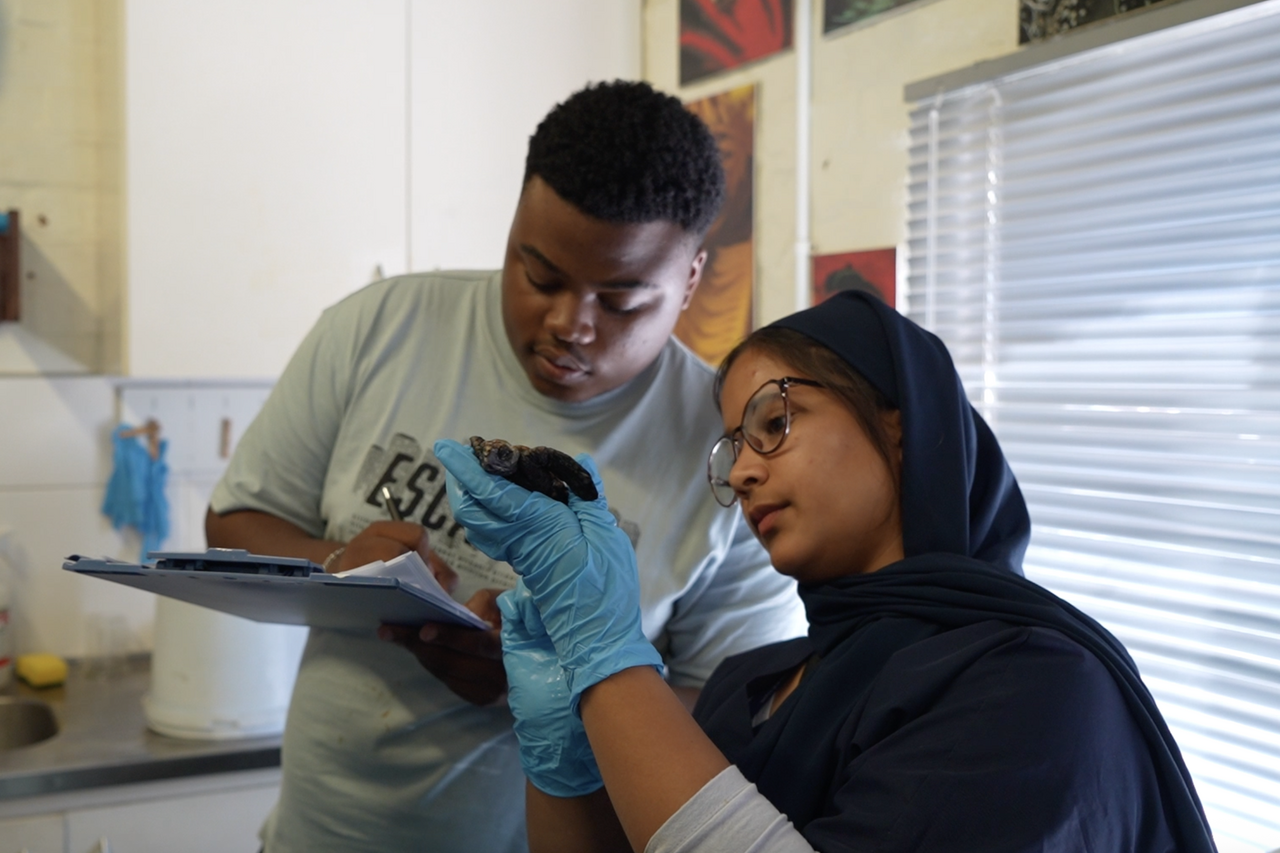
The hatchlings then moved to the quarantine space, where a line of turtle team members and volunteers began the usual admission procedure by measuring, weighing, and assessing their body condition. While one team member measured the hatchling’s shell or quantified the algae on their flippers, the other ensured that all this information was recorded on the hatchling’s stranding sheet.
After their morphometrics were taken, the hatchlings’ ID numbers were drawn onto their carapaces with a turtle-safe marker. This is not in our typical practice, but with hundreds of turtles with varying ailments to keep track of, the marker ensured that there were no mix-ups in treatment and handling.
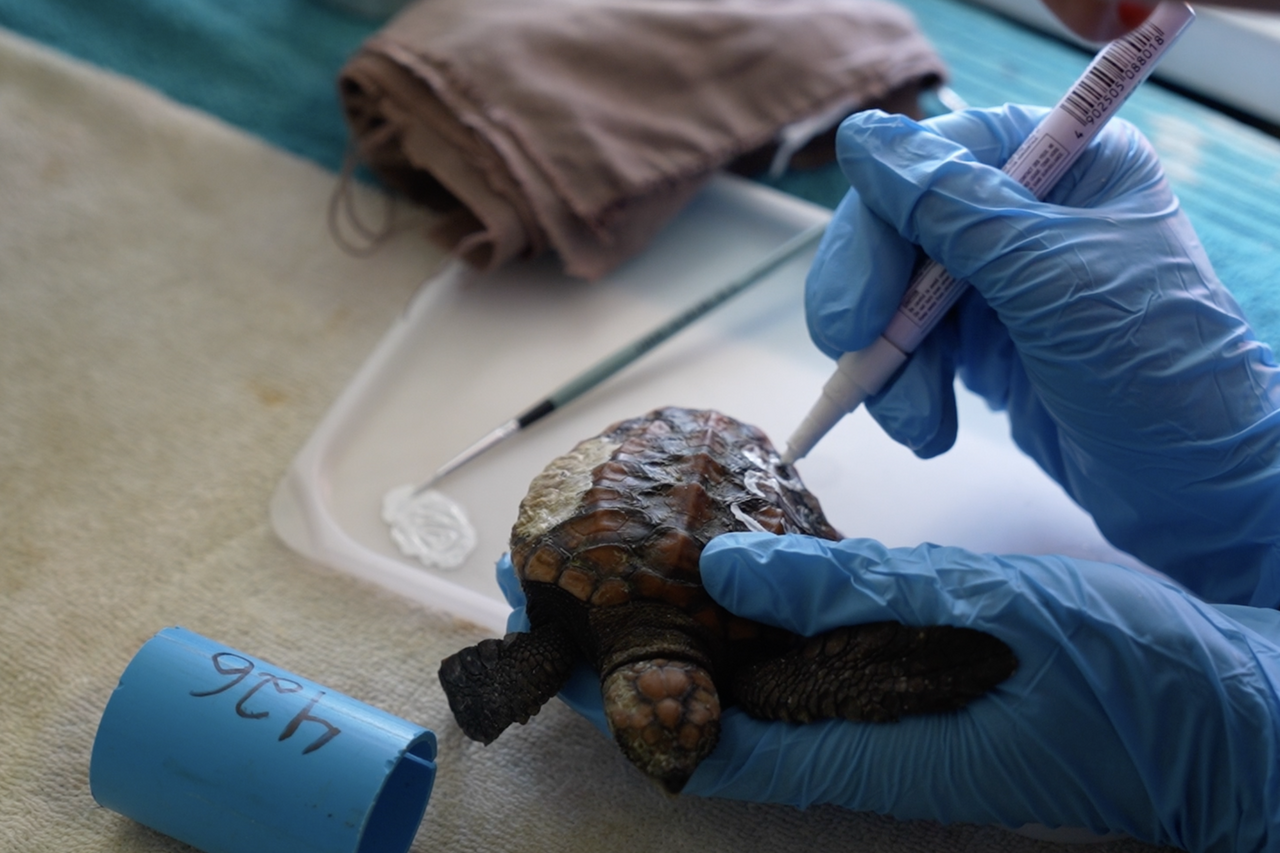
Next, the hatchling’s ID photos were taken alongside the blue numbered caps that are placed on their ice cream tubs. These ID photos are a vital tool for the turtle team, as each turtle can be identified by the unique pattern of scutes (shell plates) on its face.
Finally, the hatchlings were placed in freshwater baths to help them rehydrate and regain stable body temperature. After 15 minutes, the freshwater was swapped out for seawater, and the hatchlings were placed in their temporary housing.
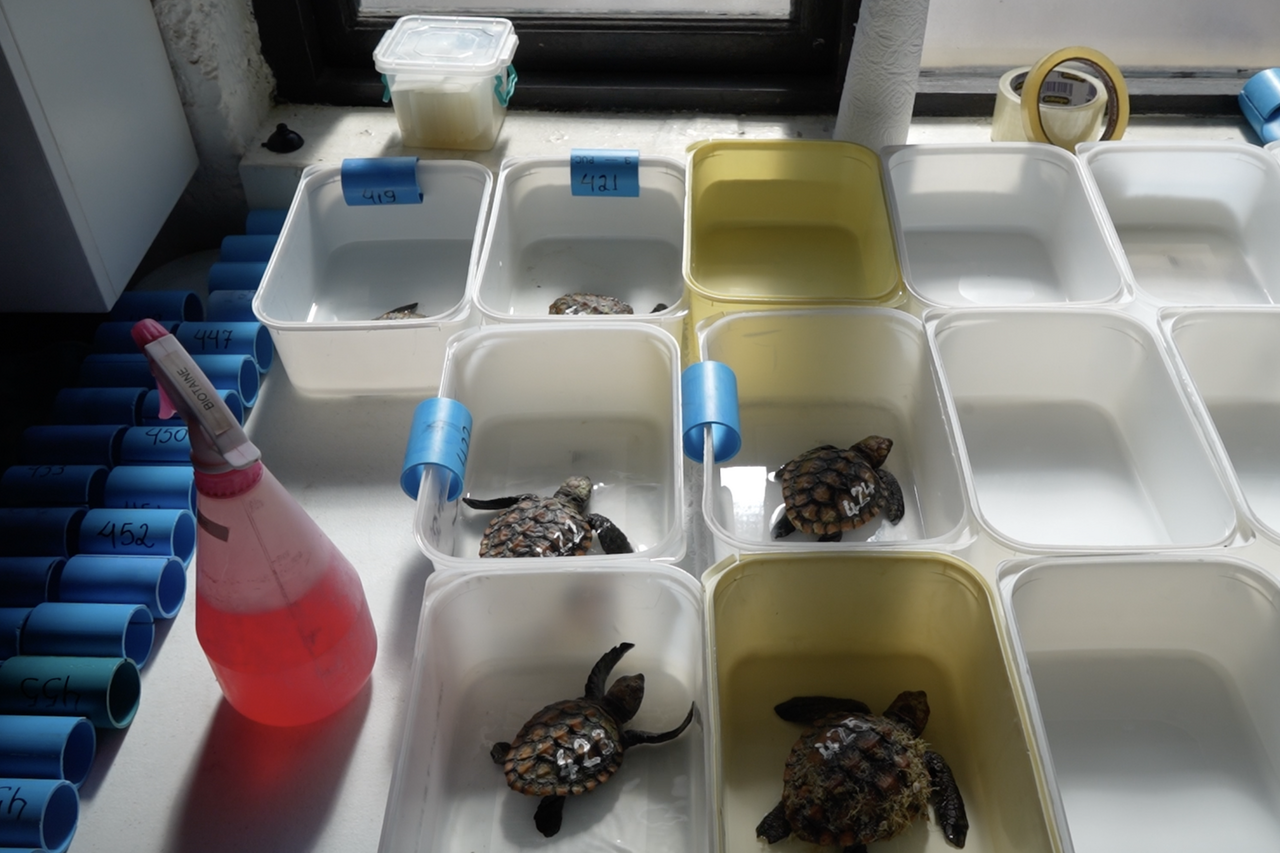
How did the Turtle Conservation Centre house over 600 hatchlings?
When it became clear that our rehabilitation space was exceeding capacity, the Turtle Conservation Centre team began to brainstorm ways to mitigate the issue. With existing housing for just 120 turtles, the team needed to find space for five times that many!
In the early stages of “turtle-geddon”, the team reached out to our national partners in sea turtle rehabilitation, the South African Association of Marine Biological Research (SAAMBR) and BayWorld Oceanarium. Both organisations offered incredible support by accepting approximately 200 hatchlings from our facility for continued rehabilitation and eventual release. The turtles were selected to travel to Durban and Gqeberha according to strict parameters that indicated their stability, such as weight, swimming ability, appetite, and blood sugar levels. We are very grateful to both organisations for helping us out in this challenging time.
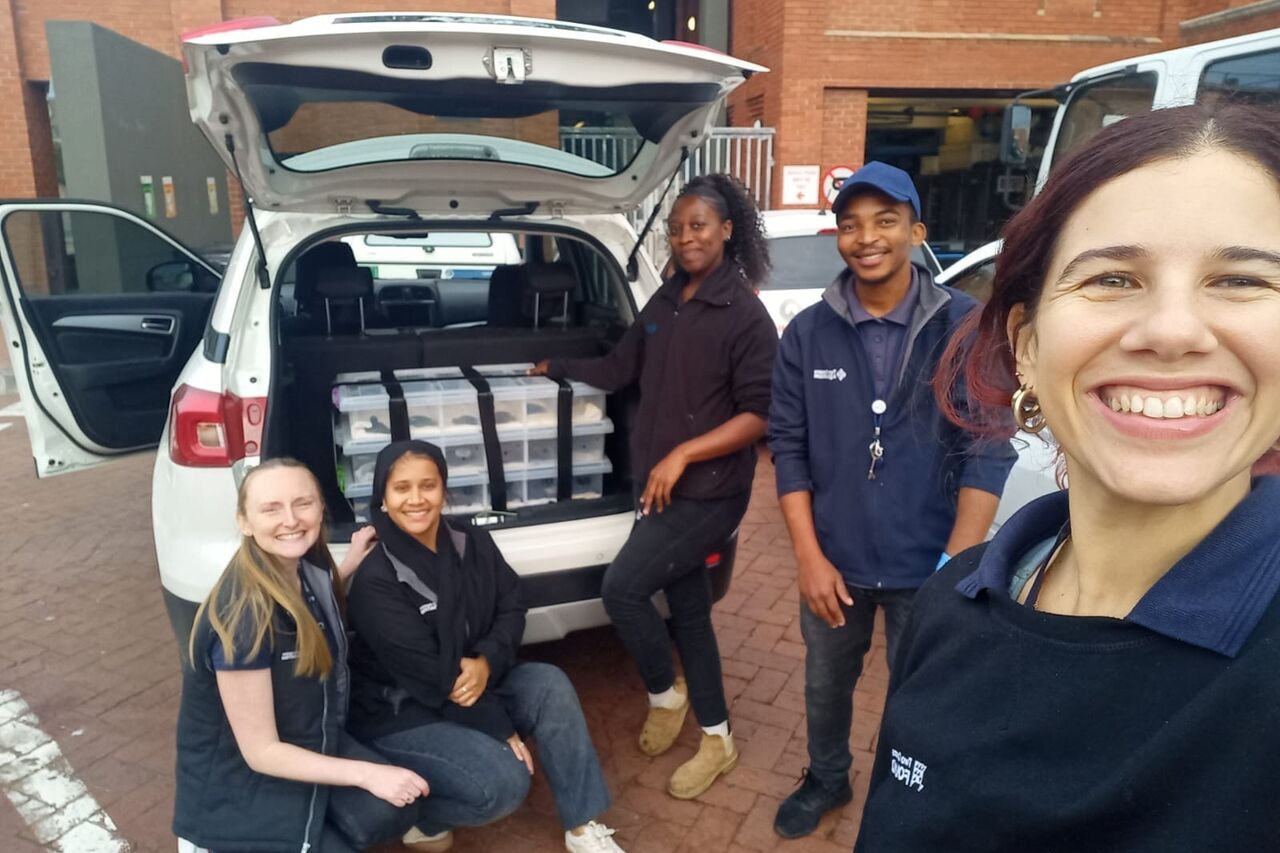
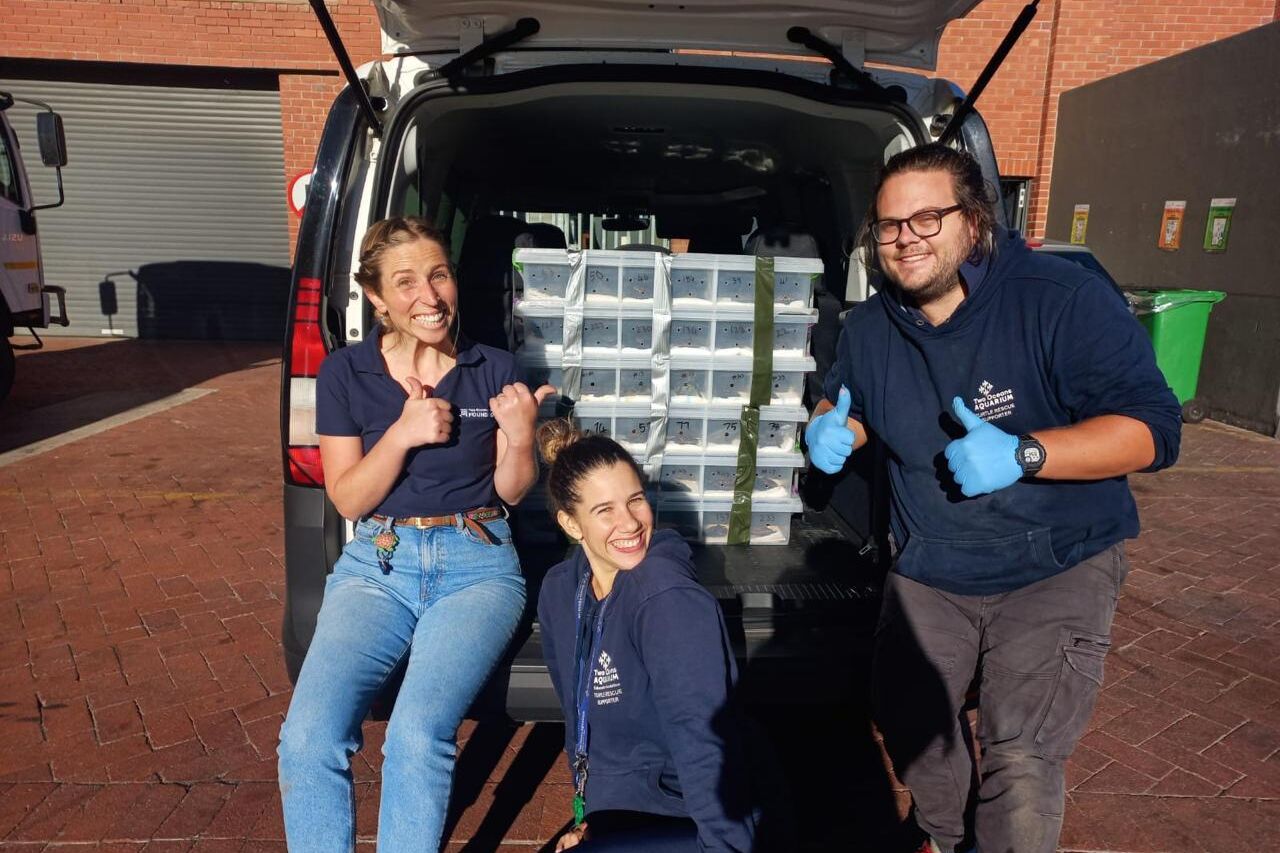
The bulk of the hatchlings remained in our care at the Turtle Conservation Centre, and fortunately, the Two Oceans Aquarium workshop team was happy to help with their housing. The boat store and roof of the I&J Ocean Exhibitwere transformed into additional holding areas for 168 turtles, while ice cream containers in shared tanks were used to house weak individuals in the intensive care unit. Thanks to an incredible group effort, the remaining turtles (just over 400) were safely and comfortably housed for their rehabilitation.
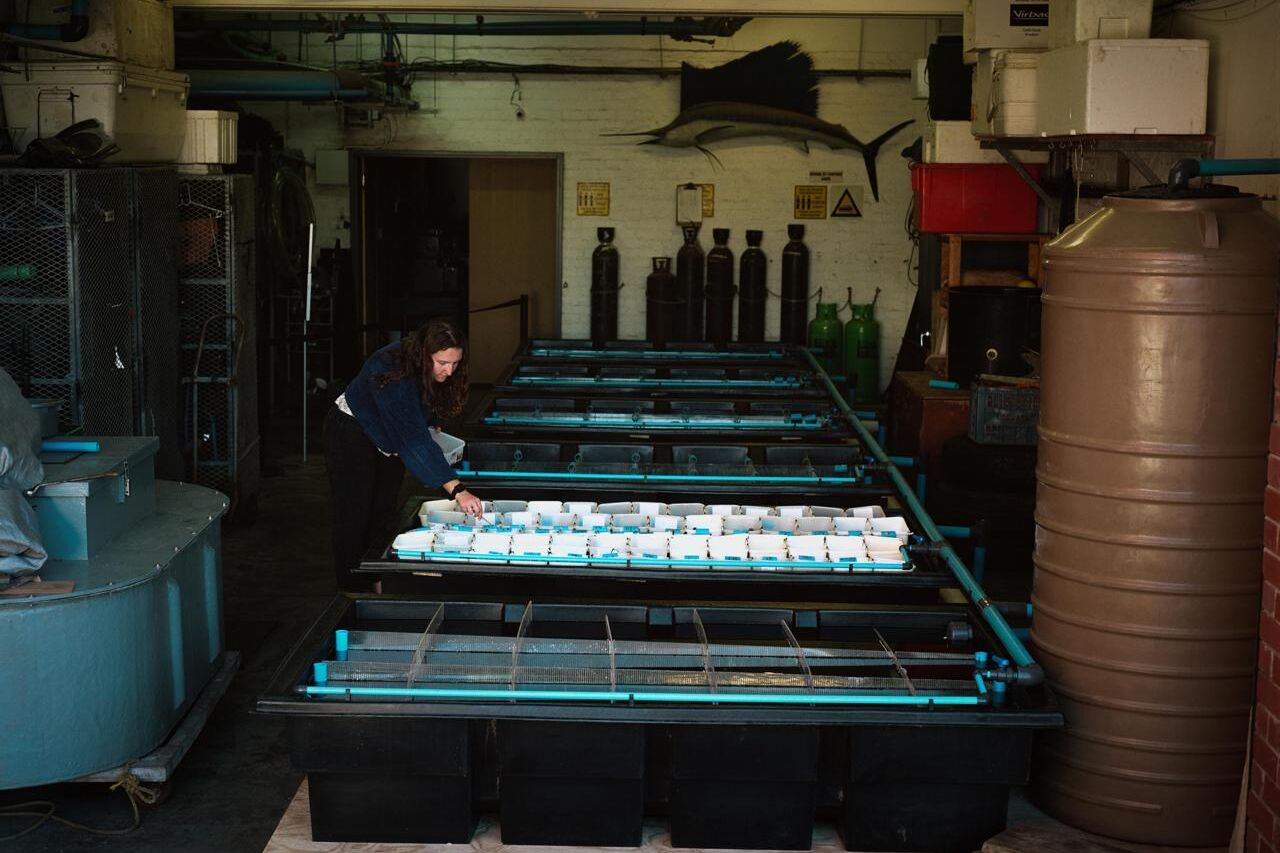
Terrific triaging
With hundreds of hatchlings to care for, the turtle team realised the need for grading the turtles according to the severity of their ailments. This is because space in the critical care unit began to run out. Triaging proved an incredibly effective tool in managing the patients.
During the initial admission process, turtles were triaged according to mental alertness, physical strength, respiratory capabilities, the presence of wounds, blood values, and body condition scores. For example, while some hatchlings were rescued in relatively good condition, others were emaciated and injured. Each turtle was colour-coded (red, yellow, or blue) and individually marked and housed accordingly.
Red patients were housed in the intensive care unit – they were monitored constantly, and many needed to be tube-fed, placed on oxygen or in an incubator, and given regular intravenous fluids. Red patients were all on active medication. Yellow patients were housed in the boat store – they received regular checkups and may have been on medication, but most were able to swim and eat independently. Finally, the blue patients were housed on the roof spaces – these turtles were off medication and received weekly checkups. Through veterinary discretion, the turtles would move between triage levels depending on progress or deterioration.
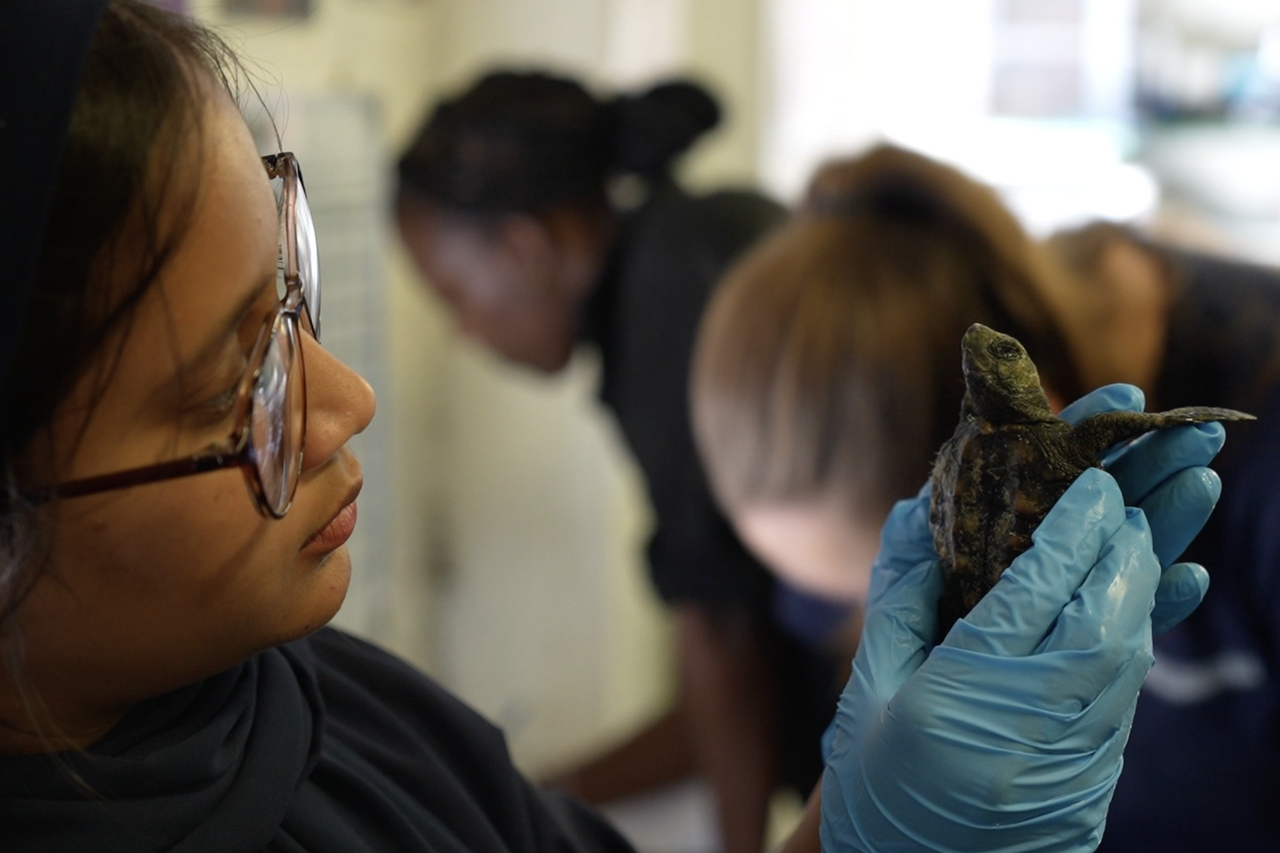
Many hands make lighter work
Our relatively small turtle team swiftly enlisted several volunteers to help with the daily demands. We are very grateful to these volunteers for their steadfast dedication during this period, from feeding over 400 hungry hatchlings and monitoring their freshwater baths during admission to the grind of siphoning and sterilising each holding pool daily.
The team was overwhelmed by the incredible generosity of the broader turtle community when they reached out for help. Through both a fundraising campaign and a drive for supplies, it was wonderful to receive such encouragement from turtle supporters far and wide.
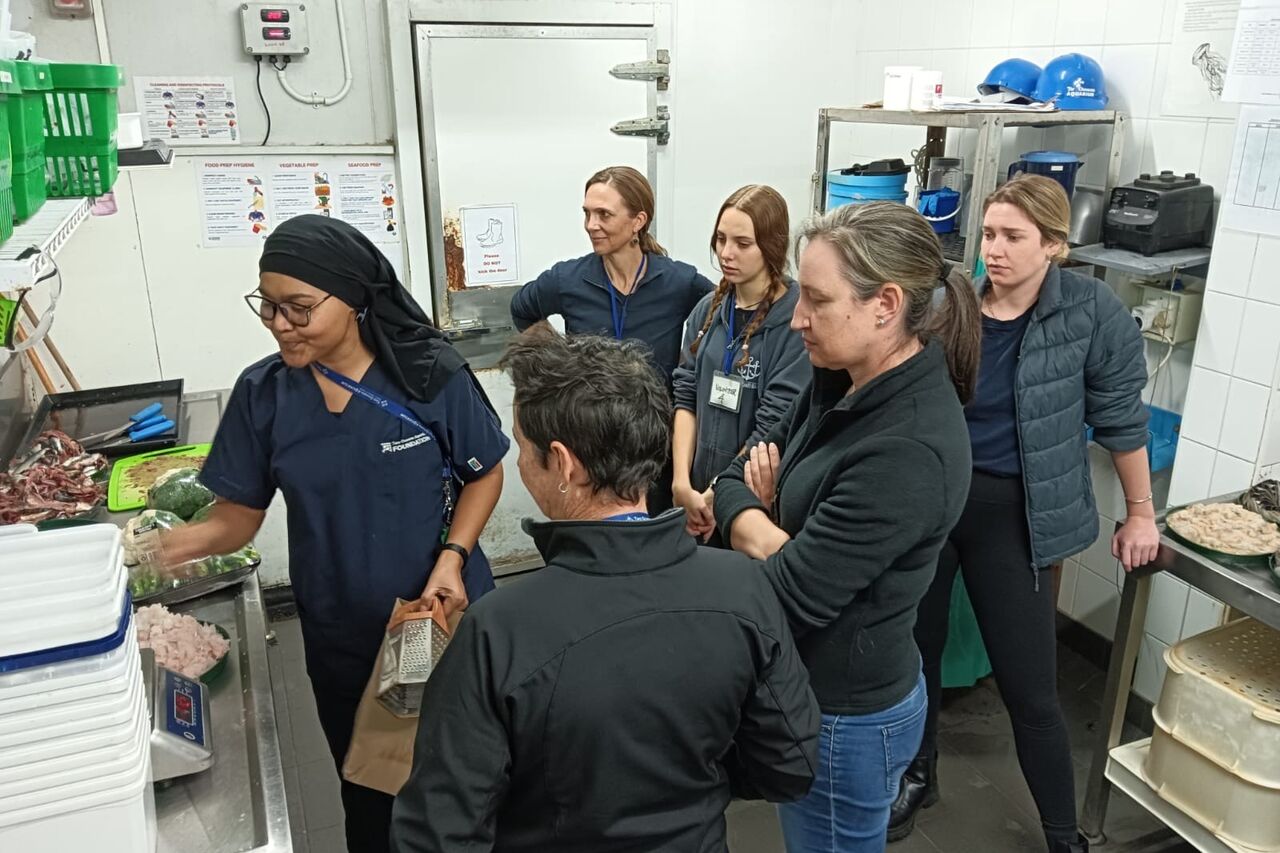
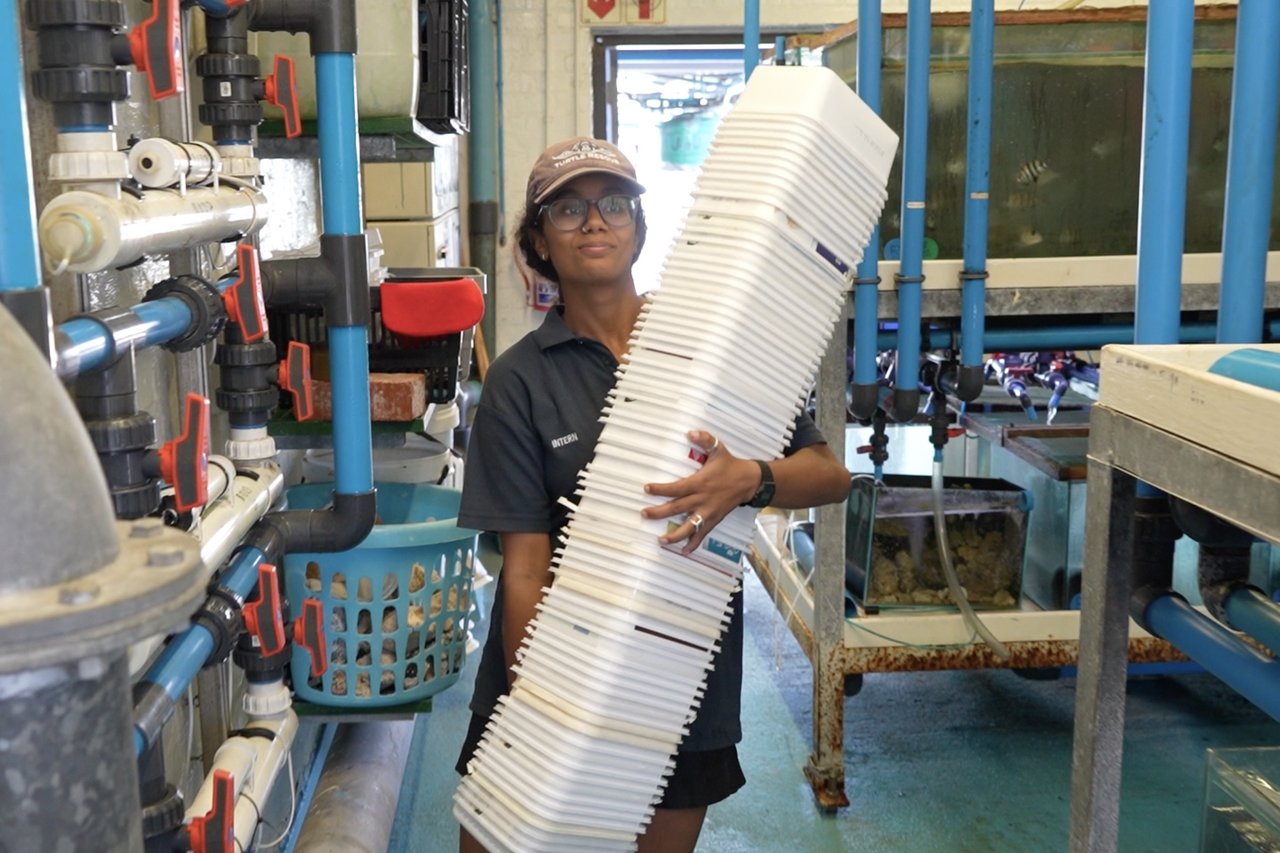
Takeaways from “turtle-geddon”
One of the most interesting parts of the 2024 stranding season was the massive range in the hatchlings’ health. Many of the initial arrivals were in good body condition and much stronger than expected. But, as the season progressed, the team began to receive weaker turtles that exhibited the typical stranding season conditions like predation wounds, emaciation, and disease. The team at the Turtle Conservation Centre believes that the unusually rough ocean conditions likely resulted in turtles washing up that would, under normal conditions, have been able to avoid stranding. This explains the high number of relatively healthy hatchlings.
While tumultuous, “turtle-geddon” was a catalyst for improvement: The team improved their medical triaging and systematised their rehabilitation processes to an even greater extent. Should this situation arise in the future, the team will be even better prepared!
Releasing over 600 hatchlings… and how can you help?
The “turtle-geddon” story ends happily: Of the 606 turtles rescued, 504 were released back into their ocean home! The remainder includes the turtles kept in rehabilitation for longer due to ongoing health issues, as well as the mortalities caused by plastic ingestion, severe injury, or disease.
The Turtle Conservation Centre is incredibly proud of the extraordinary success rate that came out of “turtle-geddon”. It is a testimony to the excellent care and hard work that went into rehabilitating each of the 606 hatchlings amidst the chaos.
All seven species of turtle are listed as endangered on the IUCN’s Red List of Threatened Species. In the wild, only one in every thousand loggerhead turtles survives to adulthood. In the hands of our turtle team, 606 turtle hatchlings that would have perished (often due to human-induced hazards) have a second chance at life in the ocean. By rescuing, rehabilitating, and releasing these indicator species, the Turtle Conservation Centre moves the needle in the fight for their future.
“Turtle-geddon” may have been unprecedented, but turtle stranding season happens every year. This means that you have every opportunity to help save these incredible animals. You can do this in so many ways, from making a once-off donation and adopting a hatchling to refusing single-use plastics and speaking out about ocean health. Every small step means a brighter future for turtles!
Related News
Sign up to our Newsletter
Receive monthly news, online courses and conservation programmes.
